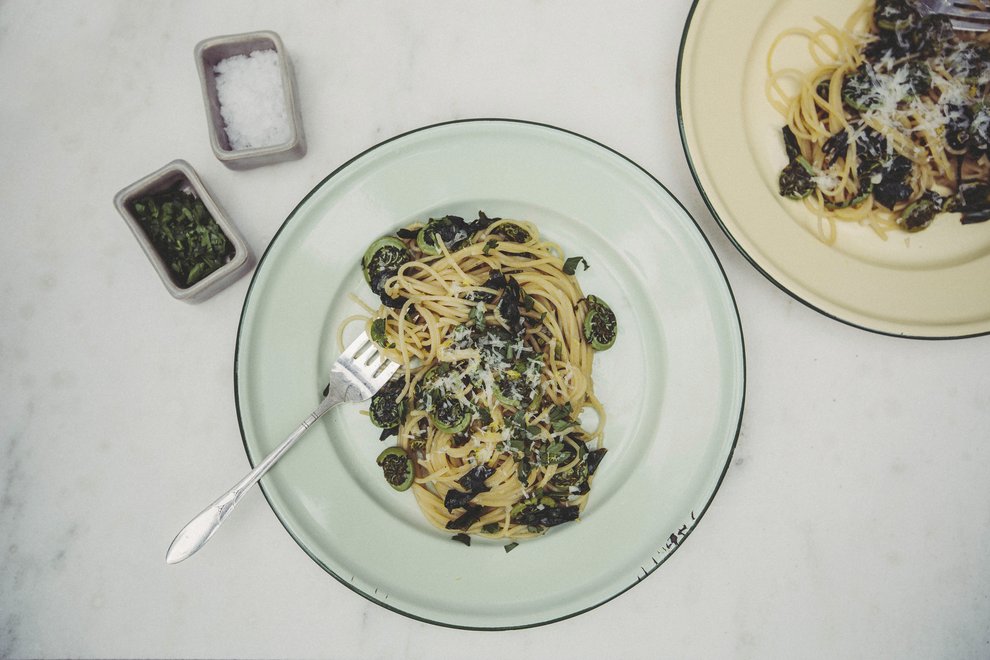A Natural Escape: Spring Foraging in the Forests of Vermont
Nature’s beauty is not limited to dazzling sunsets and gram-worthy horizons. In fact, our latest adventure involves powering down technology and connecting to a different world wide web: the food chain.
Since day one (seriously, we’re talking caveman era) foraging has played a crucial role in human growth and nourishment. But as cool as it is to get in touch with our foraging roots, we’re not exactly out here for survival.

You can get all the organic food you want at the local grocery store. What we’re searching for is a different kind of nourishment. Call it an escape, brain floss, or a cleansing of the palate. It’s a seasonal indulgence. Right around mid-May here in Vermont, fiddleheads and ramps are ready for picking. We know where they hide, and it’s the perfect excuse to clear the schedule and head to the forest.
We have our trusty guidebook to tell us which plants are safe to eat. After all, something that “looks about right” could be a shortcut to food poisoning. Knowing which things to pick is crucial. Once you do, the fun begins.
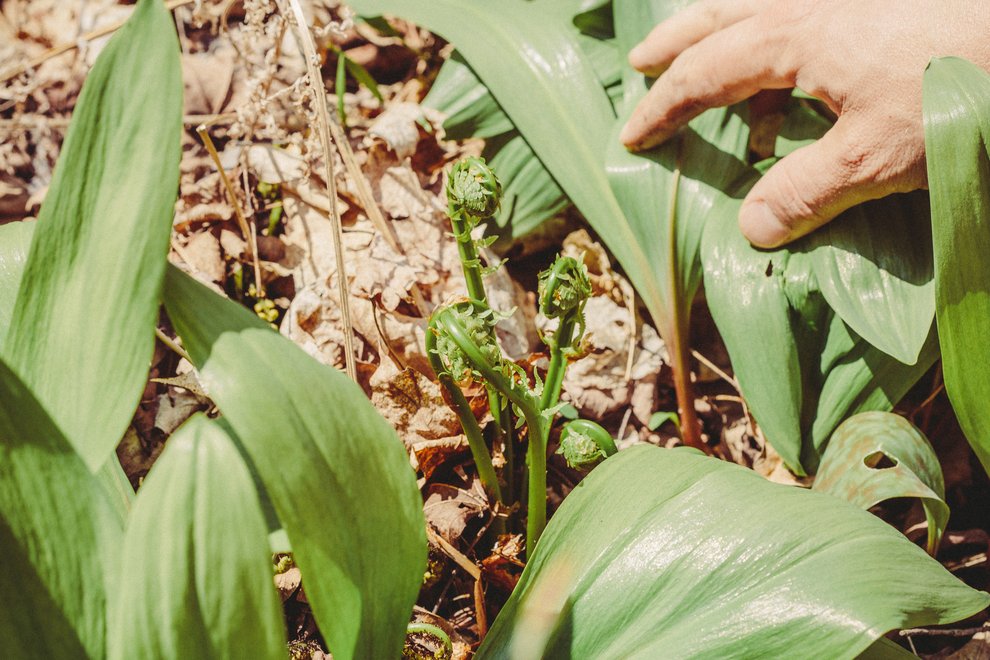
We look for fiddleheads in areas with damp soil—typically flat ground, often surrounded by hardwoods. A pair of scissors and a bucket are all we need to snip enough for a meal. They grow in clumps, and its common practice to only snip a few from each clump to sustain the colony. Once you find one clump, it’s usually easy to find more, especially when you get down to ground level. It’s like searching for seashells: You get in a rhythm, and get intimate with the smaller creatures of the forest. All of a sudden it’s been two hours. Just wait, you’ll get lost…
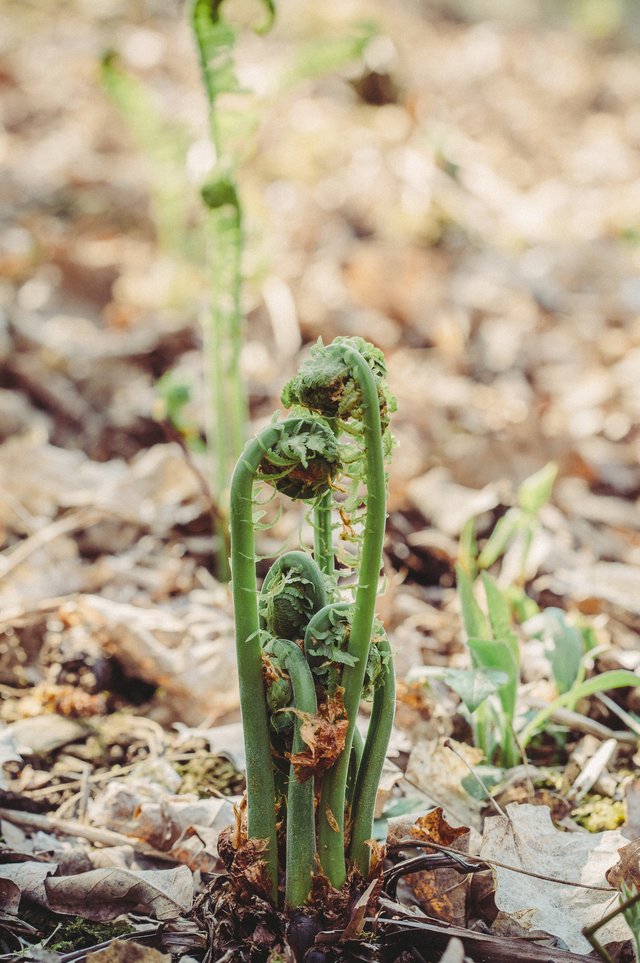
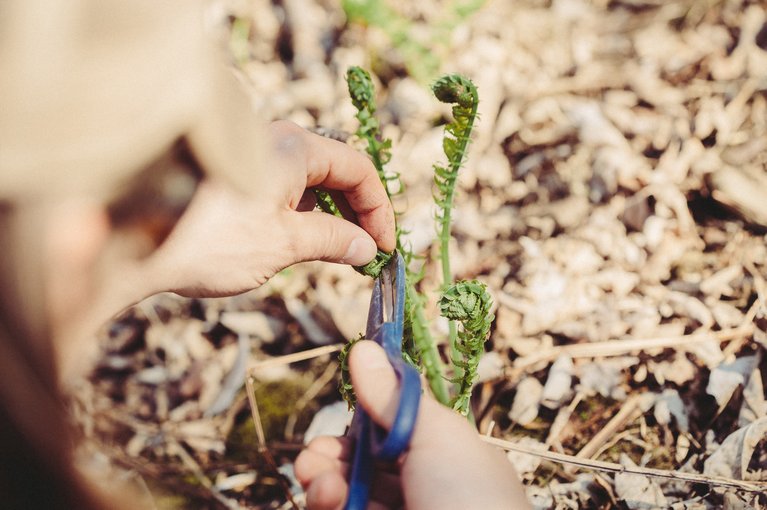
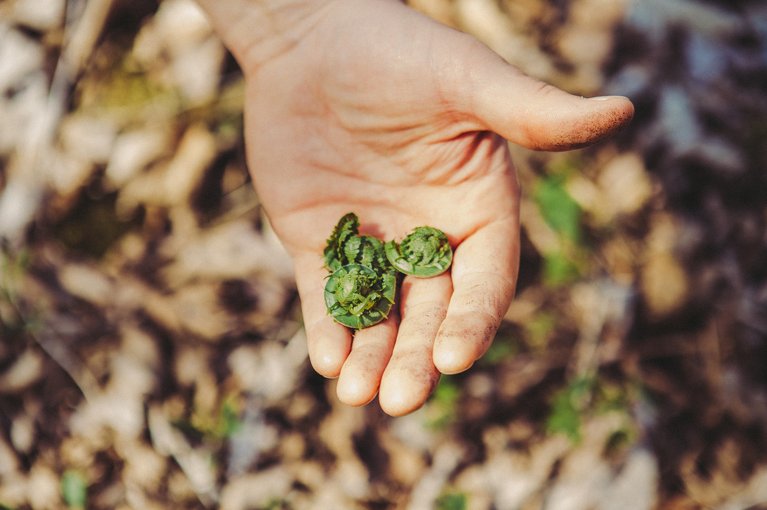
Ramps are on the menu, too. They’re a little bit like onions, grow in bunches all over the place, and are grouped closely together. Once you find a patch of them, there’s a good chance you can go back year after year, so long as you harvest responsibly and don’t pull more than you need.
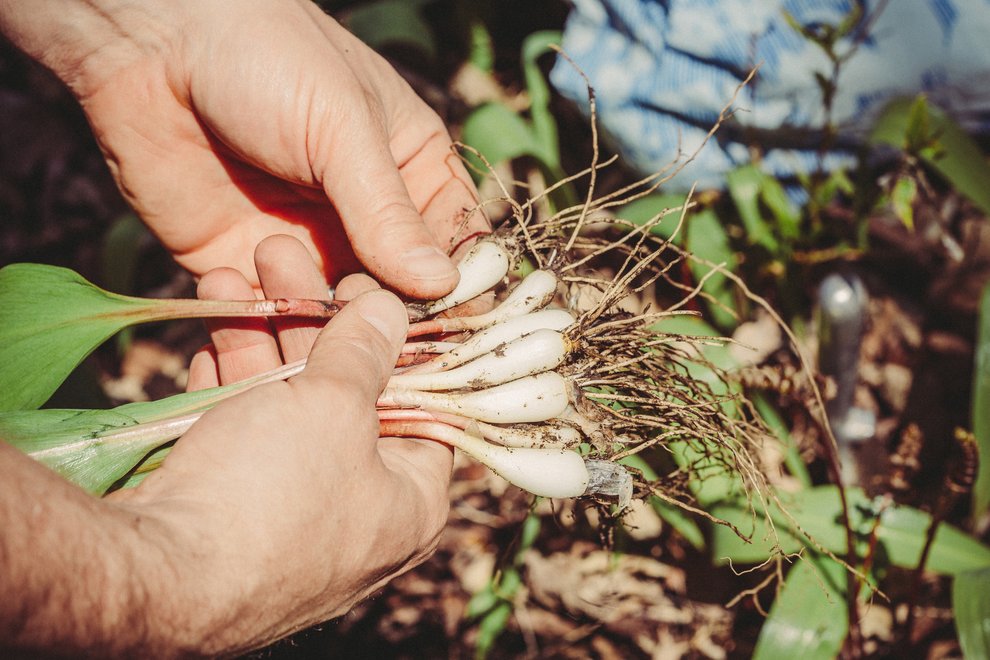
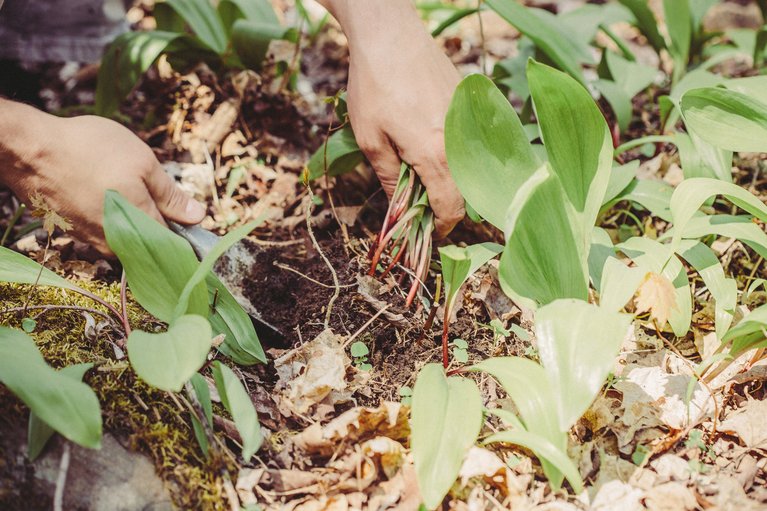
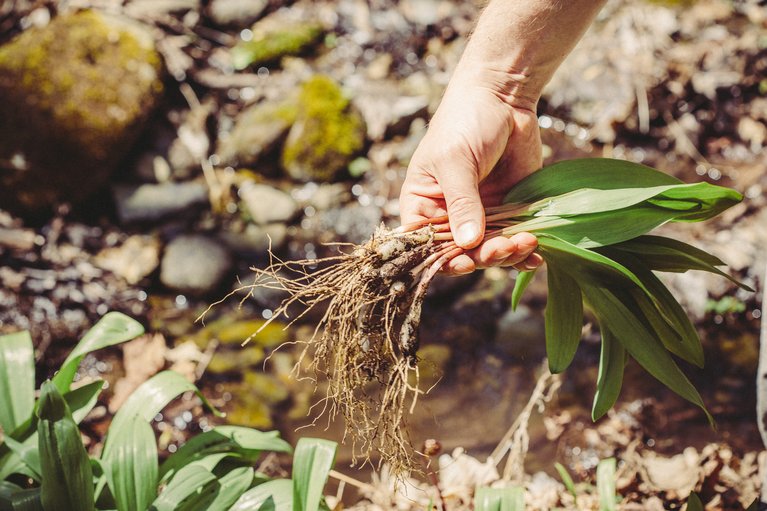
It’s our favorite way to forget how long we’ve been in the woods. Just enough of a mission to warrant preparation, but not so much that we have to bring a map and change of clothes.
If you’re really jazzed up about the foraging aspect, here’s one of our favorite recipes that utilizes both fiddleheads and ramps:
Foraged Spring Pasta
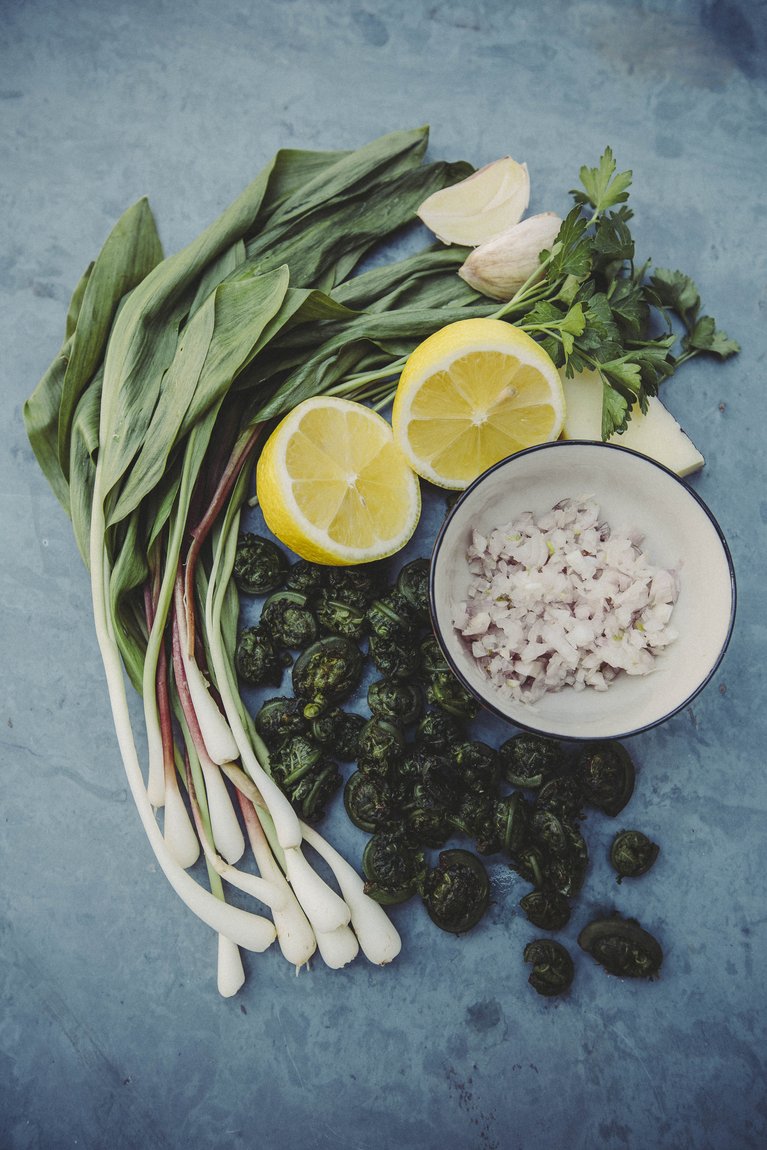
What you need (serves 2):
2 cups of fiddleheads
1 cup of ramps
1 shallot minced
1 large garlic clove minced
2 teaspoons of olive oil
2 tablespoons of butter
½ cup of white wine
8oz of whole wheat spaghetti
Zest from half a lemon for garnish
Juice from half a lemon
2 tablespoons of chopped parsley
Grated pecorino romano cheese for garnish
What to do:
Clean the ramps and fiddleheads by soaking them in two bowls of cold water for 10 minutes, then drain. Prep the ramps by pulling off the outer layer and removing the root. Chop the green part and stem into 2-inch-long pieces. Mince the remaining ramp bulb and discard any root, set aside.
Bring a medium sized saucepan of water to a boil and add fiddleheads. Cook for 10 minutes, then drain and run under cold water. Drain excess water and pat the fiddleheads dry.
Bring a large pot of water to a boil and cook pasta according to package directions. Throw a few pinches of salt in the water for seasoning. Once pasta is cooked, strain and set aside.
In a large skillet over medium heat add butter and olive oil. Once the butter starts bubbling add in the shallots, garlic, ramp bulbs and cook until translucent. Add the wine and sauté for another minute. Next add the fiddleheads and sauté for three to four minutes. Finally, add ramps and sauté for two minutes, season the vegetables with salt and pepper to your liking. Add drained pasta and stir. Turn off heat. Add lemon zest and juice over top. Finish with parsley and grated cheese. ∆
